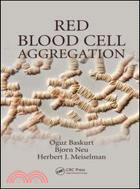Red Blood Cell Aggregation
商品資訊
ISBN13:9781439841808
出版社:CRC Press UK
作者:Oguz Baskurt; Bjorn Neu and Herbert J. Meiselman
出版日:2011/09/26
裝訂/頁數:精裝/318頁
規格:23.5cm*15.9cm*2.5cm (高/寬/厚)
版次:1
定價
:NT$ 9750 元優惠價
:90 折 8775 元
若需訂購本書,請電洽客服 02-25006600[分機130、131]。
商品簡介
作者簡介
目次
相關商品
商品簡介
Red blood cells in humans—and most other mammals—have a tendency to form aggregates with a characteristic face-to-face morphology, similar to a stack of coins. Known as rouleaux, these aggregates are a normally occurring phenomenon and have a major impact on blood rheology. What is the underlying mechanism that produces this pattern? Does this really happen in blood circulation? And do these rouleaux formations have a useful function?
The first book to offer a comprehensive review of the subject, Red Blood Cell Aggregation tackles these and other questions related to red blood cell (RBC) aggregates. The book covers basic, clinical, and physiological aspects of this important biophysical phenomenon and integrates these areas with concepts in bioengineering. It brings together state-of-the-art research on the determinants, mechanisms, and measurement and effects of RBC aggregation as well as on variations and comparative aspects.
After an introductory overview, the book outlines factors and conditions that affect RBC aggregation. It presents the two hypotheses—the bridging model and the depletion model—that provide potential mechanisms for the adhesive forces that lead to the regular packing of the cells in rouleaux formations. The book also reviews the methods used to quantify RBC aggregation in vitro, focusing on their importance in clinical practice. Chapters discuss the effect of RBC aggregation on the in vitro rheology of blood as well as on tube flow.
The book also looks at what happens in the circulation when red blood cells aggregate and examines variations due to physiological and pathophysiological challenges. The concluding chapter explores the formation of red blood cell aggregates in other mammals. Written by leading researchers in the field, this is an invaluable resource for basic science, medical, and clinical researchers; graduate students; and clinicians interested in mammalian red blood cells.
The first book to offer a comprehensive review of the subject, Red Blood Cell Aggregation tackles these and other questions related to red blood cell (RBC) aggregates. The book covers basic, clinical, and physiological aspects of this important biophysical phenomenon and integrates these areas with concepts in bioengineering. It brings together state-of-the-art research on the determinants, mechanisms, and measurement and effects of RBC aggregation as well as on variations and comparative aspects.
After an introductory overview, the book outlines factors and conditions that affect RBC aggregation. It presents the two hypotheses—the bridging model and the depletion model—that provide potential mechanisms for the adhesive forces that lead to the regular packing of the cells in rouleaux formations. The book also reviews the methods used to quantify RBC aggregation in vitro, focusing on their importance in clinical practice. Chapters discuss the effect of RBC aggregation on the in vitro rheology of blood as well as on tube flow.
The book also looks at what happens in the circulation when red blood cells aggregate and examines variations due to physiological and pathophysiological challenges. The concluding chapter explores the formation of red blood cell aggregates in other mammals. Written by leading researchers in the field, this is an invaluable resource for basic science, medical, and clinical researchers; graduate students; and clinicians interested in mammalian red blood cells.
作者簡介
Oguz Baskurt is a Professor of physiology at Koc University School of Medicine, Istanbul Turkey. His research is focused on the role of hemorheological factors in in vivo flow dynamics of blood, and he has conducted research on the mechanisms of red blood cell aggregation and hemorheological instrumentation. His scientific interest also includes comparative aspects of circulatory physiology and hemorheology in a wide variety of mammalian species. He has published more than 150 peer-reviewed papers and is among the editors of Handbook of Hemorheology and Hemodynamics (IOS Press, 2007) and the international journal Clinical Hemorheology and Microcirculation. He served as the president of The International Society of Clinical Hemorheology for two terms between 1999 and 2005.
Björn Neu is a Professor of Bioengineering at the Nanyang Technological University in Singapore. He received his Doctorate in Biophysics in 1999 at the Humboldt University in Berlin and did post-doctoral research in the area of hemorheology at the Keck School of Medicine, University of Southern California in Los Angeles. His research interests include cell interactions, polymers at bio-interfaces and the rheological behavior of blood.
Herbert J. Meiselman is Professor and Vice-Chair of Physiology and Biophysics at the Keck School of Medicine, University of Southern California, where he conducts research in the field of blood rheology in health and disease, including comparative studies of various mammalian species. He is among the editors of the Handbook of Hemorheology and Hemodynamics (IOS Press, 2007) and the international journals Biorheology and Clinical Hemorheology and Microcirculation. He has published more than 250 peer-reviewed papers, has received the Fåhraeus Award and the Poiseuille Gold Medal, and is currently President of the International Society for Clinical Hemorheology.
Björn Neu is a Professor of Bioengineering at the Nanyang Technological University in Singapore. He received his Doctorate in Biophysics in 1999 at the Humboldt University in Berlin and did post-doctoral research in the area of hemorheology at the Keck School of Medicine, University of Southern California in Los Angeles. His research interests include cell interactions, polymers at bio-interfaces and the rheological behavior of blood.
Herbert J. Meiselman is Professor and Vice-Chair of Physiology and Biophysics at the Keck School of Medicine, University of Southern California, where he conducts research in the field of blood rheology in health and disease, including comparative studies of various mammalian species. He is among the editors of the Handbook of Hemorheology and Hemodynamics (IOS Press, 2007) and the international journals Biorheology and Clinical Hemorheology and Microcirculation. He has published more than 250 peer-reviewed papers, has received the Fåhraeus Award and the Poiseuille Gold Medal, and is currently President of the International Society for Clinical Hemorheology.
目次
Introduction Phenomenon of Red Blood Cell Aggregation Definitions Historical Aspects Recent History and Future Directions Literature Cited
Determinants of Red Blood Cell Aggregation Factors Affecting Red Blood Cell Aggregation Macromolecules as Determinants of Red Blood Cell Aggregation Cellular Factors Determining the Extent of Red Blood Cell Aggregation Literature Cited
Mechanism of Red Blood Cell AggregationCurrent Models of RBC AggregationThe Depletion Theory for Red Blood Cell AggregationEvidence Supporting Depletion HypothesisConcluding RemarksLiterature Cited
Measurement of Red Blood Cell AggregationMethods for Quantification of Red Blood Cell AggregationSample Preparation for Red Blood Cell Aggregation MeasurementAssessment of Red Blood Cell AggregabilityInterpretation of the ResultsLiterature Cited
Effect of Red Blood Cell Aggregation on In Vitro Blood RheologyInitial ConsiderationsViscometric SystemsPotential Artifacts Affecting Blood ViscometryRheological Behavior of BloodLiterature Cited
Effect of Red Blood Cell Aggregation on Tube FlowHistorical PerspectivesTube FlowFåhraeus EffectFåhraeus-Lindqvist EffectEffect of Red Blood Cell Aggregation on Tube FlowConclusionLiterature Cited
In Vivo Hemodynamics and Red Blood Cell AggregationBasic Approach to In Vivo Blood FlowIn Vivo versus In Vitro Blood ViscosityExperimental Studies Investigating In Vivo Effects of Red Blood Cell AggregationHemodynamic Mechanisms Influenced by Red Blood Cell AggregationRed Blood Cell Aggregation: Good or Bad for Tissue Perfusion?Literature Cited
Alterations in Red Blood Cell Aggregation“Normal” Ranges of Red Blood Cell AggregationAlterations of Red Blood Cell Aggregation with Extreme ConditionsAlterations of Red Blood Cell Aggregation in Pathophysiological ProcessesTherapeutic Approach to Red Blood Cell AggregationLiterature Cited
Comparative Aspects of Red Blood Cell AggregationAggregation Is a Characteristic of Mammalian Red Blood CellsRed Blood Cell Aggregation Characteristics in Various Mammalian SpeciesCorrelations with Red Blood Cell PropertiesCorrelation with Other Properties of SpeciesConclusionLiterature Cited
Index
Determinants of Red Blood Cell Aggregation Factors Affecting Red Blood Cell Aggregation Macromolecules as Determinants of Red Blood Cell Aggregation Cellular Factors Determining the Extent of Red Blood Cell Aggregation Literature Cited
Mechanism of Red Blood Cell AggregationCurrent Models of RBC AggregationThe Depletion Theory for Red Blood Cell AggregationEvidence Supporting Depletion HypothesisConcluding RemarksLiterature Cited
Measurement of Red Blood Cell AggregationMethods for Quantification of Red Blood Cell AggregationSample Preparation for Red Blood Cell Aggregation MeasurementAssessment of Red Blood Cell AggregabilityInterpretation of the ResultsLiterature Cited
Effect of Red Blood Cell Aggregation on In Vitro Blood RheologyInitial ConsiderationsViscometric SystemsPotential Artifacts Affecting Blood ViscometryRheological Behavior of BloodLiterature Cited
Effect of Red Blood Cell Aggregation on Tube FlowHistorical PerspectivesTube FlowFåhraeus EffectFåhraeus-Lindqvist EffectEffect of Red Blood Cell Aggregation on Tube FlowConclusionLiterature Cited
In Vivo Hemodynamics and Red Blood Cell AggregationBasic Approach to In Vivo Blood FlowIn Vivo versus In Vitro Blood ViscosityExperimental Studies Investigating In Vivo Effects of Red Blood Cell AggregationHemodynamic Mechanisms Influenced by Red Blood Cell AggregationRed Blood Cell Aggregation: Good or Bad for Tissue Perfusion?Literature Cited
Alterations in Red Blood Cell Aggregation“Normal” Ranges of Red Blood Cell AggregationAlterations of Red Blood Cell Aggregation with Extreme ConditionsAlterations of Red Blood Cell Aggregation in Pathophysiological ProcessesTherapeutic Approach to Red Blood Cell AggregationLiterature Cited
Comparative Aspects of Red Blood Cell AggregationAggregation Is a Characteristic of Mammalian Red Blood CellsRed Blood Cell Aggregation Characteristics in Various Mammalian SpeciesCorrelations with Red Blood Cell PropertiesCorrelation with Other Properties of SpeciesConclusionLiterature Cited
Index
主題書展
更多
主題書展
更多書展今日66折
您曾經瀏覽過的商品
購物須知
外文書商品之書封,為出版社提供之樣本。實際出貨商品,以出版社所提供之現有版本為主。部份書籍,因出版社供應狀況特殊,匯率將依實際狀況做調整。
無庫存之商品,在您完成訂單程序之後,將以空運的方式為你下單調貨。為了縮短等待的時間,建議您將外文書與其他商品分開下單,以獲得最快的取貨速度,平均調貨時間為1~2個月。
為了保護您的權益,「三民網路書店」提供會員七日商品鑑賞期(收到商品為起始日)。
若要辦理退貨,請在商品鑑賞期內寄回,且商品必須是全新狀態與完整包裝(商品、附件、發票、隨貨贈品等)否則恕不接受退貨。
























